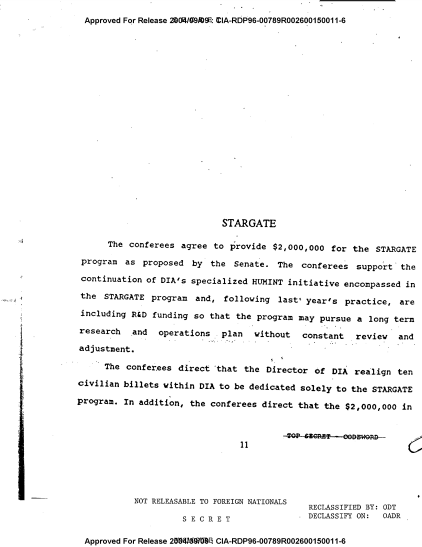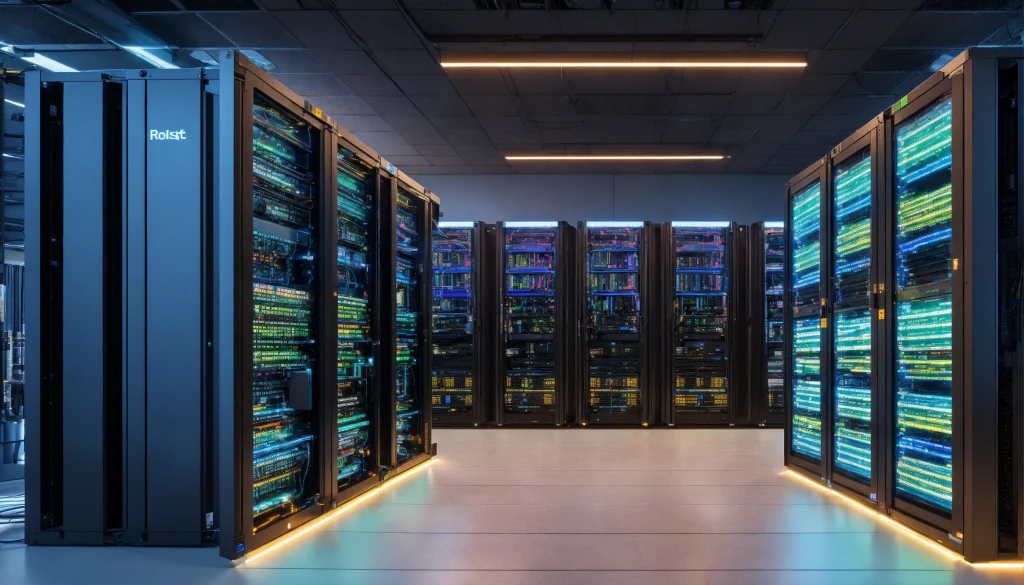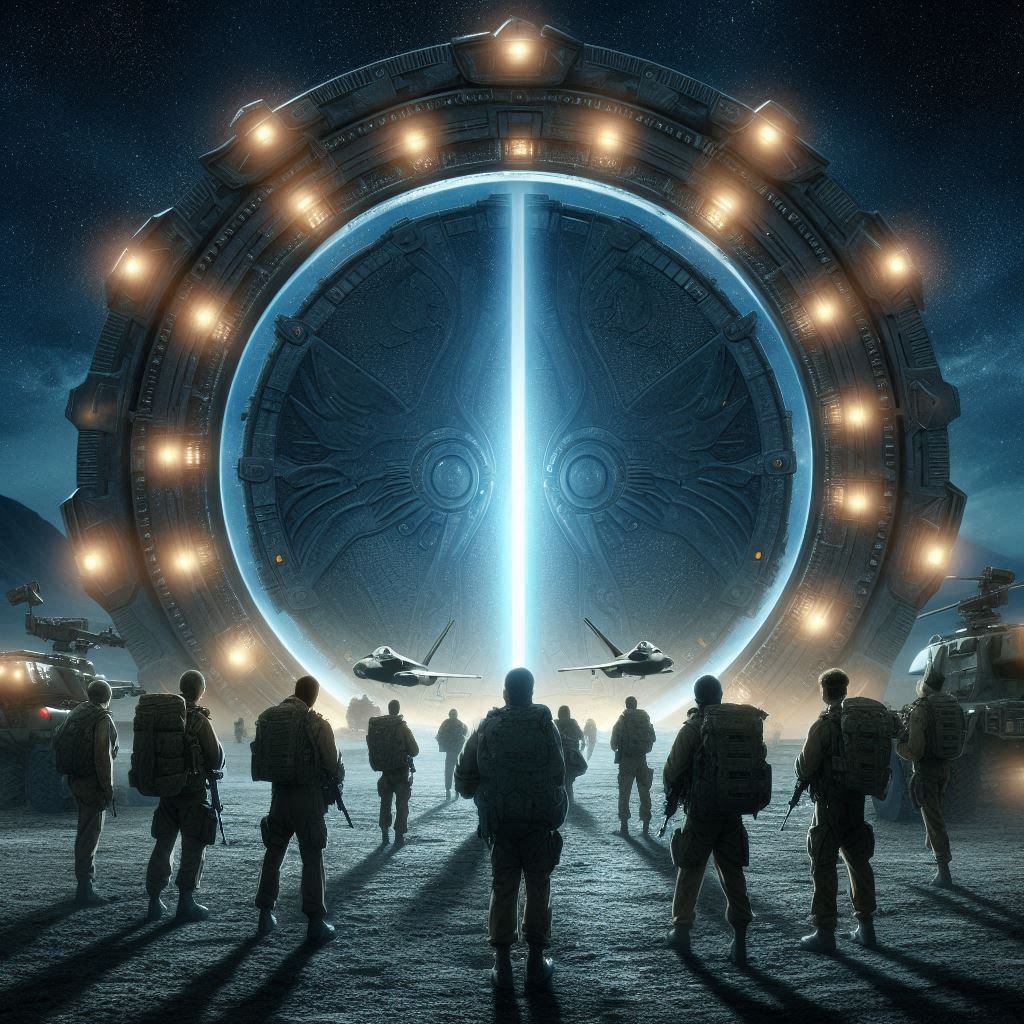From psychics to AI, the dubious origins of the name Trump gave to his AI project portends its future, writes Satyen K. Bordoloi.
In the shadowy corridors of Cold War-era America, where espionage and secrecy trumped diplomacy, the U.S. government embarked on a bizarre mission that seems straight out of a dystopian science fiction novel. The Stargate Project was a clandestine program launched in the 1970s by the CIA and the Defense Intelligence Agency (DIA). Its aim? To harness the power of psychic phenomena—remote viewing, telepathy, and clairvoyance—to gain an edge over the Soviet Union.
Picture this: a group of highly trained individuals, dubbed “remote viewers,” sitting in dimly lit rooms, attempting to “see” distant locations, hidden nuclear facilities, or even the thoughts of enemy agents. The project, which ran for over two decades, was fuelled by the belief that the human mind could transcend the limits of space and time. While it produced some intriguing anecdotes—like the alleged discovery of a Soviet submarine using psychic means—the scientific validity of its findings remains dubious at best. By the 1990s, the Stargate Project was declassified and largely dismissed as a Cold War exigent.

Yet, the name “Stargate” lingered, this time being launched across galaxies, becoming a huge military sci-fi media franchise spawning multiple films, TV series, books, video games and comic books. Unintendedly, the term became a moniker that promised the impossible: a gateway to realms beyond our understanding. Fast forward to 2025, and the name has resurfaced, teleporting itself to the realm of artificial intelligence. But is this new Stargate Project destined to follow in the footsteps of its predecessor, or will it carve out a legacy of its own?
The New Stargate: Trump’s AI Moonshot

On just the second day of his second presidency, Donald Trump announced the launch of the new Stargate Project, calling it “the largest AI infrastructure project in history”. Unlike its paranormal predecessor, this one is firmly rooted in the digital age, aiming to push the boundaries of artificial intelligence and infrastructure. The project, a collaboration between the U.S. government, tech giants, and private investors, is to start with an investment of $100 billion that may rise to $500 billion by 2029 and intends to revolutionise everything from data centres to electricity grids.
SoftBank is said to be taking up the “financial responsibility” of the project, with the other initial equity funders being OpenAI, Oracle and MGX. OpenAI will carry out the “operational responsibility” alongside “key initial technology partners” in Arm, Microsoft, Nvidia, and Oracle.
At its core, the new Stargate Project is about creating the infrastructure needed to support the next generation of AI technologies. This includes the development of massive data centres, advanced computing hardware, and an energy grid capable of powering the insatiable demands of AI systems. The project also aims to foster innovation in AI research, with a particular focus on artificial general intelligence (AGI).
The ambitions of Stargate go beyond mere infrastructure, intending to stamp American dominance in the global AI race. With China and other nations investing heavily in AI, the U.S. sees Stargate as a way to maintain its technological supremacy. As Trump declared in his announcement that it is “a resounding declaration of confidence in America’s potential.”

A Name with a Dubious Legacy
The choice of the name “Stargate” is both intriguing and troubling. On one hand, it evokes a sense of grandeur and limitless possibility, much like the original project or the media empire. On the other hand, it carries the baggage of its predecessor’s dubious origins. The first Stargate was a venture into the unknown, driven by a mix of curiosity and desperation. The project promised the stars but delivered little more than smoke and mirrors.
The new Stargate Project is, in many ways, a modern-day moonshot. It aims to achieve what many consider the holy grail of AI: AGI. But here’s the catch—AGI is as elusive and poorly understood as psychic phenomena were in the 1970s. Critics – I, being one of them, argue that AGI is more of a marketing dream than a tangible goal, a buzzword used to attract funding and attention.
As for the humongous amount of money to be poured into the program, Elon Musk tweeted, “They don’t actually have the money. SoftBank has well under $10B secured. I have that on good authority.” Despite Mr. Musk’s assertion, money is not the problem. In the world of business and technology, it’s not necessarily what you have but what you’re good for that counts. Hence, the Stargate Project, with its ambitious vision and high-profile backers, will capture the imagination of the tech world. Whether it can deliver on its promises is the moot question.
The Good, the Shady, and the Snake Oil

The new Stargate Project has two distinct facets: one is undeniably beneficial, and another is shrouded in scepticism. The first is its focus on building AI infrastructure. Data centres, energy grids, and advanced computing hardware are essential for the continued growth of AI technologies. This aspect of the project is not just commendable but necessary.
The second facet is where things get murky. This is the pursuit of AGI, a pet project for OpenAI’s Sam Altman. For all the hype surrounding AGI, there is little consensus on what it actually is, whether it can be achieved, or even if it should be. Some have likened the push for AGI to selling snake oil—a promise of miracles without a guarantee of delivery.
The parallels between the old and new Stargate Projects are hard to ignore. Both are driven by a desire to achieve the impossible, whether it’s unlocking the secrets of the human mind or creating machines that can think like humans. Both are also fuelled by a mix of ambition, fear, and the allure of technological supremacy.
A Gateway to the Future or a Bridge to Nowhere?

As the new Stargate Project takes shape, it’s worth reflecting on the lessons of its predecessor. For all its flaws, the original Stargate Project was a relatively low-cost experiment that ultimately did little harm. The new Stargate, however, is a different beast altogether. With a $500 billion price tag, it represents a significant investment of resources that could be used to address pressing global challenges like climate change, poverty, and healthcare.
One can only hope this new Stargate delivers on its promises and doesn’t become another footnote in the history of ambitious but ultimately futile endeavours. As the Trump presidency unfolds, the success or failure of the Stargate Project will likely become a litmus test for the administration’s ability to turn bold visions into reality.
Ultimately, the name “Stargate” may prove both a blessing and a curse. It carries the weight of history, a reminder of the fine line between ambition and folly. Whether this new project becomes a gateway to the future or a bridge to nowhere remains to be seen. But one thing is certain: the stakes have never been higher.
In case you missed:
- A Manhattan Project for AI? Here’s Why That’s Missing the Point
- How Old Are We: Shocking New Finding Upends History of Our Species
- Rise of Generative AI in India: Trends & Opportunities
- DeepSeek not the only Chinese model to upset AI-pple cart; here’s dozen more
- Nuclear Power: Tech Giants’ Desperate Gamble for AI
- You’ll Never Guess What’s Inside NVIDIA’s Latest AI Breakthrough
- OpenAI’s Secret Project Strawberry Points to Last AI Hurdle: Reasoning
- The Path to AGI is Through AMIs Connected by APIs
- Unbelievable: How China’s Outsmarting US Chip Ban to Dominate AI
- AI vs. Metaverse & Crypto: Has AI hype lived up to expectations









